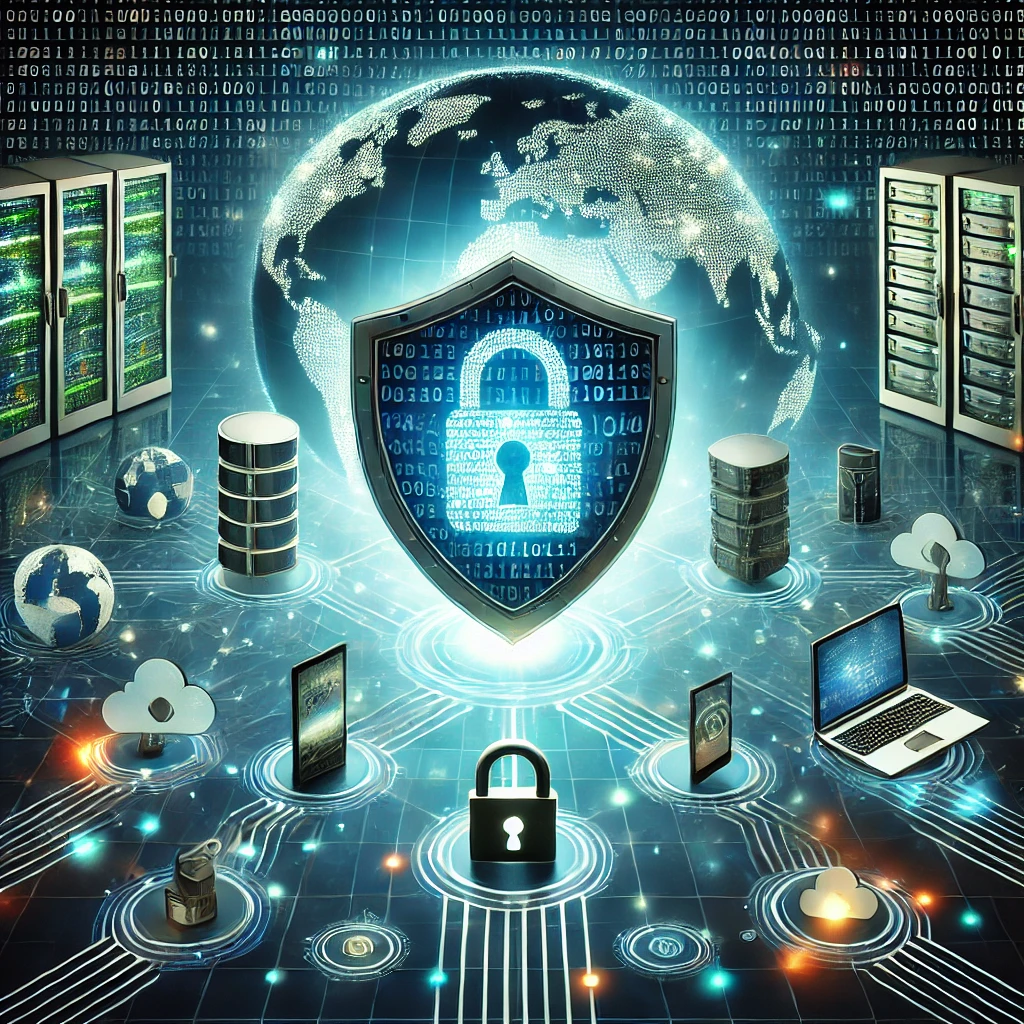As our world becomes more digital, we rely heavily on interconnected systems. These range from personal gadgets and smart homes to global financial networks and government infrastructures. The digital realm underpins modern society, but this connectivity brings increased risks, making cybersecurity a vital concern. This article delves into the current state of cybersecurity, the challenges we face, and strategies to safeguard data in our connected world.
The Importance of Cybersecurity
Cybersecurity encompasses the practices, technologies, and strategies aimed at protecting systems, networks, and data from cyber threats. In today’s digital environment, where sensitive data is continuously exchanged, cybersecurity is crucial to:
- Safeguard personal and financial information.
- Protect vital infrastructure like power grids and healthcare systems.
- Maintain trust in digital services and commerce.
- Prevent intellectual property theft and industrial espionage.
Key Cybersecurity Challenges in the Digital Age
1. Advanced Cyberattacks
Cybercriminals use sophisticated methods, including artificial intelligence (AI) and machine learning (ML), to outsmart traditional defenses. Threats like ransomware, phishing, and distributed denial-of-service (DDoS) attacks are becoming more targeted and effective.
2. Expanded Attack Surface
The surge in Internet of Things (IoT) devices, remote work setups, and cloud services has increased potential entry points for cyberattacks. Each connected device can be a vulnerability.
3. Data Breaches and Identity Theft
High-profile data breaches have compromised sensitive information of millions, leading to financial loss and decreased trust in organizations.
4. Insider Threats
Employees and contractors, whether malicious or careless, can pose significant cybersecurity risks. These threats are hard to detect and often have severe consequences.
5. Regulatory and Compliance Challenges
Organizations must comply with an increasingly complex array of data protection laws and regulations, such as GDPR, CCPA, and HIPAA. Non-compliance can lead to hefty fines and reputational damage.
6. Cybersecurity Talent Shortage
A lack of skilled cybersecurity professionals leaves many organizations vulnerable, as they struggle to implement and maintain strong security measures.
Key Strategies for Protecting Data
1. Strengthening Authentication Mechanisms
- Multi-Factor Authentication (MFA): Requires users to verify their identity through multiple methods, like a password and a one-time code sent to their device.
- Biometric Authentication: Uses unique physical traits, like fingerprints or facial recognition, for secure access.
2. Encrypting Data
Encryption turns data into unreadable code, ensuring that even if intercepted, it remains secure. End-to-end encryption is particularly crucial for sensitive communications.
3. Regular Software Updates
Outdated software often has vulnerabilities that cybercriminals can exploit. Regular updates to operating systems, applications, and firmware are essential to patch security gaps.
4. Implementing Network Security Measures
- Firewalls: Act as barriers between trusted and untrusted networks.
- Intrusion Detection Systems (IDS): Monitor network traffic for suspicious activity.
- Virtual Private Networks (VPNs): Secure data transmission by encrypting connections, especially over public Wi-Fi.
5. Conducting Employee Training
Human error is a major cause of cybersecurity incidents. Regular training can help employees recognize phishing attempts, handle sensitive data responsibly, and follow security protocols.
In conclusion, as we navigate the digital age, robust cybersecurity measures are essential to protect our interconnected world. By addressing these challenges and implementing effective strategies, we can safeguard our data and maintain trust in our digital systems.
Adopting Zero Trust Architecture
Zero Trust operates on the principle that no device or user should be trusted by default. Every access request must be verified, significantly reducing the risk of unauthorized access.
Leveraging Artificial Intelligence and Automation
AI tools are capable of identifying anomalies, detecting threats in real-time, and automating responses to mitigate potential damage.
Backing Up Data
Regular backups are essential for quick recovery from ransomware attacks or system failures, ensuring business continuity.
Cybersecurity Best Practices for Individuals
Organizations play a significant role in cybersecurity, but individuals must also take proactive steps to protect their personal data:
- Use Strong Passwords: Create complex passwords by combining letters, numbers, and symbols. Avoid reusing passwords across different accounts.
- Be Wary of Phishing: Always verify the legitimacy of emails and messages before clicking on links or downloading attachments.
- Secure Your Devices: Enable device locks, update software regularly, and install antivirus programs.
- Control Social Media Sharing: Limit the amount of personal information shared publicly to reduce the risk of social engineering attacks.
Emerging Trends in Cybersecurity
- AI and Machine Learning in Threat Detection: AI and ML are revolutionizing cybersecurity by enabling predictive threat detection and faster response times, analyzing vast data to identify unusual patterns that could signal an attack.
- Quantum Computing and Cryptography: Quantum computing presents both a threat to traditional encryption and an opportunity to develop quantum-resistant cryptographic algorithms.
- Rise of Cybersecurity-as-a-Service: Many organizations are now outsourcing their security needs to specialized providers offering scalable and cost-effective solutions.
- Focus on Privacy-Enhancing Technologies (PETs): PETs, such as homomorphic encryption and secure multiparty computation, are ensuring data privacy while enabling secure collaboration and analysis.
- Cybersecurity in IoT: As IoT devices become more widespread in both homes and industries, securing these devices is becoming a top priority. Standards and frameworks are emerging to ensure their security.
The Role of Governments and Organizations
Governments and organizations are crucial in enhancing cybersecurity:
- Developing National Cybersecurity Strategies: Governments need to invest in infrastructure and collaboration to address national security threats.
- Public-Private Partnerships: Collaboration between governments and private enterprises is essential for sharing threat intelligence and resources.
- Investing in Cybersecurity Education: Expanding training programs and certifications can help address the talent gap in the cybersecurity workforce.
Conclusion
In today’s digital age, cybersecurity is a fundamental requirement for protecting data, systems, and identities. As threats evolve, our defense strategies must also advance. By leveraging advanced technologies, implementing rigorous policies, and promoting widespread education, we can create a safer, more secure digital world.
The connected world of the future promises innovation and convenience, but its potential can only be fully realized when cybersecurity becomes a shared responsibility. Every step taken toward better security is a step toward safeguarding our digital future.
